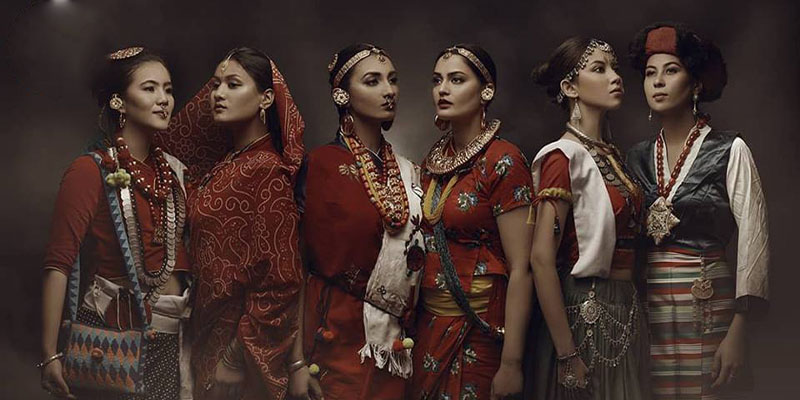Share this Article
The tradition of Panchakanya is a fascinating and complex ritual rooted in the cultural, religious, and social fabric of Nepal, especially within Hindu communities. The term Panchakanya literally translates to "five virgins," and the ritual typically involves the ceremonial honoring and offering of five young girls who are symbolically regarded as pure and sacred. This practice, while less common in contemporary society, still carries deep cultural significance in certain areas of Nepal and remains an important part of the local traditions during specific festivals, particularly in rural settings.
The ritual is intricately tied to both the concept of purity and devotion in Hinduism, as well as the veneration of women in their most innocent and youthful form. While some elements of this tradition have evolved over time, the ritual remains an important marker of community life, spirituality, and reverence for the divine.
1. Origin of the Panchakanya Ritual
The roots of the Panchakanya ritual are found in Hindu religious texts, primarily in the Mahabharata and the Puranas, where the five Kanyas (virgin girls) represent the feminine divine power, symbolizing purity, auspiciousness, and good fortune. These five women, in the epic texts, were believed to be ideal examples of feminine virtues and are often invoked for blessings.
The five virgins chosen for the Panchakanya ritual are typically young girls, often from local villages, and they are selected to represent certain auspicious qualities such as chastity, innocence, and purity. The offering of these young girls during the ritual has both a spiritual and symbolic significance, as it is believed that their purity can invoke blessings for the prosperity, health, and well-being of the community.
2. The Panchakanya Ritual: A Symbol of Purity and Blessings
The ceremony itself is marked by offerings, prayers, and purification rites. Typically, the Panchakanya ritual involves the gathering of five young girls who are adorned in traditional attire, often wearing colorful clothes, jewelry, and garlands. These girls are believed to embody the essence of purity, as they are untouched by the trials of adulthood, menstruation, or marital bonds.
2.1 The Role of the Girls in the Ritual
The selected girls are treated with great respect and reverence during the Panchakanya ritual. The idea is that their innocence and purity serve as a conduit for divine blessings. These girls are often invited to the temples, homes, or open spaces where the ceremony takes place, and they may be presented with offerings of food, money, or gifts as a form of honor. In some cases, they may be led in procession through the streets, where they are greeted with reverence by the community.
The community believes that by offering these virgins to the gods, the area will receive divine protection, and the crops will flourish, families will prosper, and the evil forces will be warded off. The girls are seen as embodying the goddess energy, and their purity is thought to directly invoke blessings from the deities.
2.2 Sacred Offerings and Rituals
During the Panchakanya pooja (ritual offering), the girls are showered with rice, flower petals, fruits, and sacred water. Often, kumkum (vermilion powder), tilak (marking on the forehead), and garlands are applied to their foreheads as a sign of devotion. The girls may also perform simple rituals like holding offerings or participating in prayers, while elders of the community chant sacred mantras, invoking the gods and goddesses to bless the participants.
The Panchakanya is often celebrated during significant Hindu festivals such as Dashain and Tihar, as these are times when reverence for deities and ancestors is especially strong, and rituals involving offerings are performed with more fervor.
3. The Symbolic Importance of the Number Five
The number five is a highly auspicious and significant number in Hinduism, representing various spiritual, philosophical, and natural aspects of life. The five girls, known as Panchakanya, represent both the five elements of nature (earth, water, fire, air, and ether) and the five senses of human perception (sight, sound, taste, touch, and smell).
In addition, the five Kanyas have strong ties to the five deities worshipped in Nepali Hinduism: Durga, Saraswati, Lakshmi, Ganga, and Parvati. These deities, each representing different aspects of feminine power, are invoked during the Panchakanya ritual, further elevating the spiritual importance of the girls.
4. The Gendered Aspect of the Ritual
The Panchakanya ritual, like many traditional Hindu practices, carries a deeply gendered significance. The ritual focuses on the feminine form, particularly on young girls who represent innocence, chastity, and the potential for fertility. It reflects how, within Hindu belief, women are associated with both the life-giving and life-sustaining powers of the earth, making them integral to the agricultural and spiritual prosperity of the community.
However, this ritual also underscores the patriarchal norms of Hindu society, where the role of women is often defined by their purity, role as mothers, and their ability to uphold familial and societal values. While the girls are honored and revered for their role in the ritual, it also reinforces traditional ideas about women’s roles within the family and society, particularly in rural areas where such practices are more prevalent.
5. Cultural Significance and Modern Interpretations
In contemporary times, the Panchakanya ritual has become less common, especially in urban areas, where societal norms and views on gender equality have evolved. However, in some rural communities and during certain festivals, the tradition is still upheld as a means of honoring and celebrating feminine virtues. The offering of girls as symbols of purity and devotion may also be viewed critically, especially within the context of contemporary feminist movements that seek to redefine the role and identity of women beyond traditional gender roles.
At the same time, modern interpretations of the Panchakanya ritual may focus more on the spiritual and symbolic aspects of the practice, emphasizing the honoring of femininity and purity without the need for physical offerings of girls. Some see this as a way to preserve cultural traditions while adapting them to more progressive, inclusive values.
6. Conclusion: The Sacred Legacy of Panchakanya
The Panchakanya ritual remains a powerful cultural and spiritual tradition in rural Nepal, rooted in the worship of purity, fertility, and divine feminine energy. While its practice may vary across regions and communities, the ritual underscores the reverence for the feminine principle within Hinduism and the close connection between women, nature, and the divine. In the modern world, the tradition continues to inspire reflection on the roles of women in society, spirituality, and the need to respect and honor their place in the world.
Categories:
Culture & Traditions
,
History & Heritage
,
Lifestyle & Local Life
Tags:
tradition
,
Heritage







